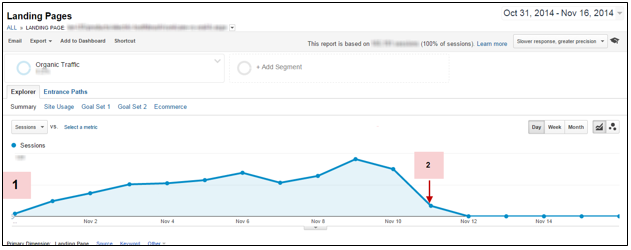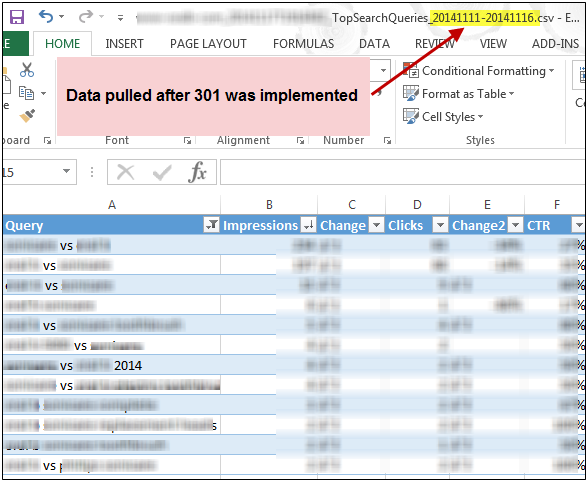It Should Have Been a 302 Redirect, Not 301, But What Happened Next May Blow Your Mind
December 16, 2014One of the best parts about being an agency SEO is learning how to collaborate with other agencies to achieve your client’s goals. Hiccups occasionally happen, and considerations need to be placed when the cost of fixing something may outweigh the benefits of doing so. Today I’ll be sharing an interesting case study where a call was made to not change a 301 redirect to a 302 temporary redirect because of this very situation. This 301 ended up doing a bit more than we expected.
301 Case Study Backstory
A client was launching a digital campaign that demonstrates product superiority over a market leader. Product claims were communicated to the creative agency and a rough concept was sketched out that would include graphics, a comparative matrix, and video testimonials. To make all this great content crawlable to search engines, the text on the comparative matrix was not part of the image, additional content popped out from the graphic when the user hovered over for more information, and video transcripts were included. A lot of back and forth happened between Catalyst and the creative team.
Early Successes
After launch, organic search traffic grew for “X vs Y” high purchase intent long-tail keywords. At one point this page was driving over 5% of all organic traffic to the website. Consumers were comparing different product models on their needs. Everything was going well as planned.
Organic traffic increased from launch (1) until the web page was taken offline (2). Obfuscated data from Google Analytics.
The Legal Curveball
On the 12th day our page was live, our competitor’s lawyers sent a cease and desist letter to the client. A decision was made to pull the page down until the client’s lawyers could assess the risk. A 301 redirect was implemented to direct www.example.com/brand-vs-competitor to the home page. As any competent SEO would tell you, the best practice would be to put a 302 redirect if the removal is temporary. I had no idea at this stage whether this would be temporary or permanent, so I did what any good SEO would do – measure the impact.
The Surprising Benefits of 301 Redirects
When a website 301 redirects a page that gets traffic from Google search, it is telling Google that the web page has moved permanently and the redirected page is the next best alternative. When resources allow, the content from the redirected page is merged with the existing content to improve user experience and retain keyword rankings. Poor 301 redirects will cause both users and search engines (redirect chains) to discredit your website.
The home page did not have the content to support these keywords, but Google and sent along “X vs Y” keyword traffic anyway.
Our home page ranked for terms that included us and our competitor after the 301 redirect was implemented.
TLDR; It is possible to rank a page for a keyword that it does not contain by 301 redirecting a page that does rank for those keywords to said page. This brings up the possibility of ranking for keywords using temporary pages that rank for a given keyword, then 301 to the page of your choice.
As a follow-up, there may be another mini-case study on what happens when you remove a 301 redirect from a URL that used to rank well organically.








